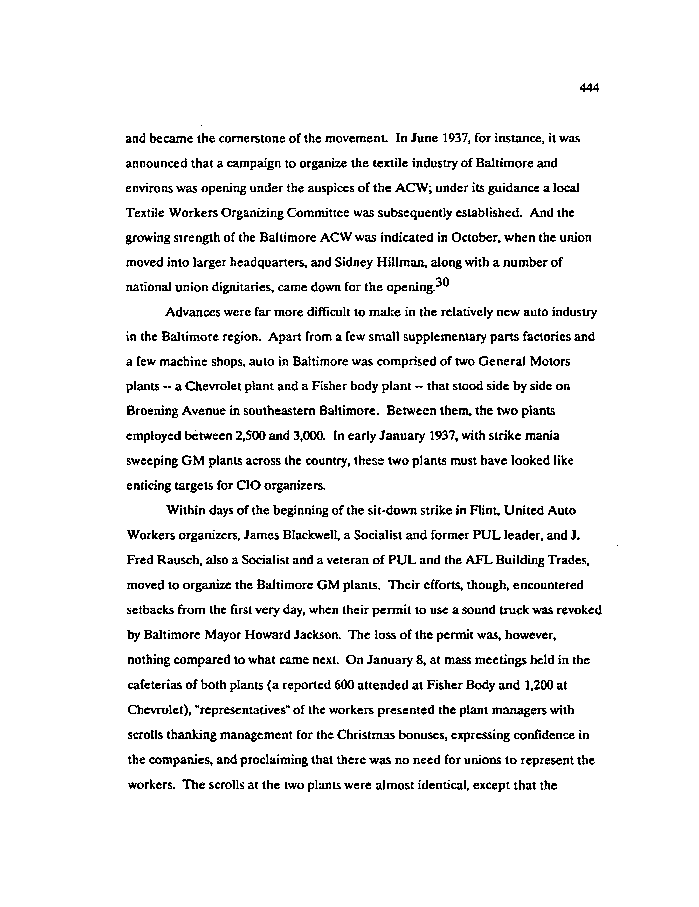|
444
and became the cornerstone of the movement. In June 1937, for instance, it was
announced that a campaign to organize the textile industry of Baltimore and
environs was opening under the auspices of the ACW; under its guidance a local
Textile Workers Organizing Committee was subsequently established. And the
growing strength of the Baltimore ACW was indicated in October, when the union
moved into larger headquarters, and Sidney Hillman, along with a number of
OA
national union dignitaries, came down for the opening.
Advances were far more difficult to make in the relatively new auto industry
in the Baltimore region. Apart from a few small supplementary parts factories and
a few machine shops, auto in Baltimore was comprised of two General Motors
plants — a Chevrolet plant and a Fisher body plant - that stood side by side on
Broening Avenue in southeastern Baltimore. Between them, the two plants
employed between 2,500 and 3,000. In early January 1937, with strike mania
sweeping CM plants across the country, these two plants must have looked like
enticing targets for CIO organizers.
Within days of the beginning of the sit-down strike in Flint, United Auto
Workers organizers, James Blackwell, a Socialist and former PUL leader, and J.
Fred Rausch, also a Socialist and a veteran of PUL and the AFL Building Trades,
moved to organize the Baltimore CM plants. Their efforts, though, encountered
setbacks from the first very day, when their permit to use a sound truck was revoked
by Baltimore Mayor Howard Jackson. The loss of the permit was, however,
nothing compared to what came next. On January 8, at mass meetings held in the
cafeterias of both plants (a reported 600 attended at Fisher Body and 1,200 at
Chevrolet), "representatives" of the workers presented the plant managers with
scrolls thanking management for the Christmas bonuses, expressing confidence in
the companies, and proclaiming that there was no need for unions to represent the
workers. The scrolls at the two plants were almost identical, except that the
|

